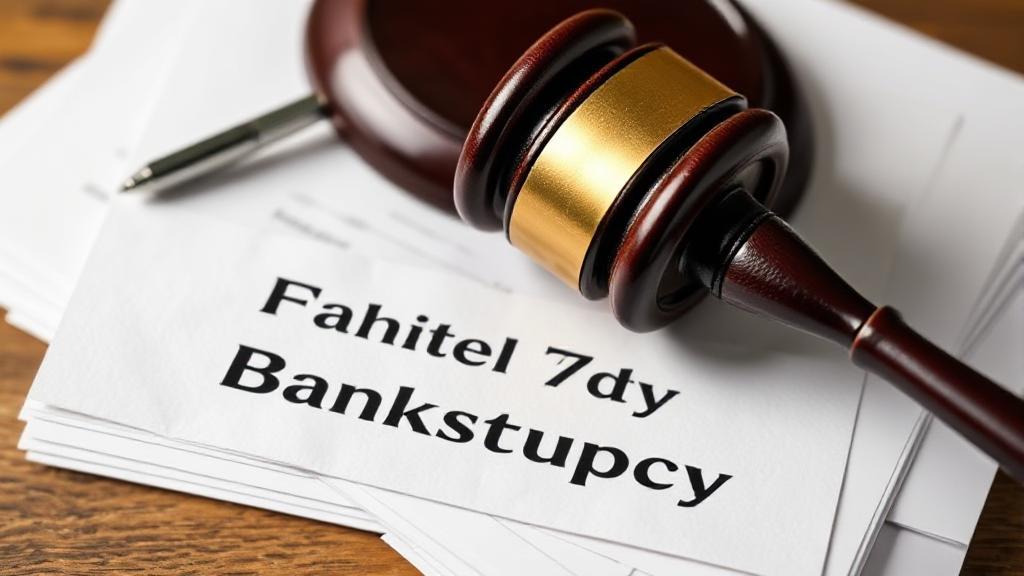Understanding Chapter 7 Bankruptcy
Chapter 7 bankruptcy, often referred to as "liquidation bankruptcy," is a legal process designed to help individuals or businesses eliminate most of their unsecured debts. This type of bankruptcy provides a fresh financial start through the liquidation of non-exempt assets to pay off creditors, after which most remaining debts are discharged.
Key Features
- Debt Discharge: Most unsecured debts, including credit card debt, medical bills, and personal loans
- Asset Liquidation: Non-exempt assets are sold to repay creditors
- Automatic Stay: Immediately stops most collection actions, including lawsuits and wage garnishments
Warning Signs and Qualifying Circumstances
Warning Signs That Bankruptcy Might Be Necessary
- Facing imminent foreclosure or vehicle repossession
- Receiving constant collection calls
- Having wages garnished
- Using one credit card to pay another
- Being unable to meet basic living expenses
Common Qualifying Circumstances
- Job loss or significant reduction in income
- Overwhelming medical bills
- Divorce or separation leading to financial hardship
- Failed business ventures
- Long-term unemployment
Eligibility and the Means Test
To qualify for Chapter 7, you must pass the "means test," which compares your income to your state's median income for a household of your size. You can find your state's median income figures on the U.S. Department of Justice website. If your income is below the state median, you may qualify. If it's above, you might still qualify after deducting certain expenses.
Important Pre-Filing Steps
Credit Counseling Requirement
Before filing, you must complete a credit counseling course from an approved provider. Find approved providers through the U.S. Trustee Program.
Document Preparation
"Proper preparation prevents poor performance." This old adage is particularly relevant when filing for bankruptcy.
Gather these essential documents:
- Tax returns (last 2 years)
- Pay stubs (previous 6 months)
- Bank statements
- Property deeds
- Vehicle titles
- Credit card statements
- Collection notices
The Chapter 7 Process
- Gathering Financial Documents: Collecting all financial records, including debts, assets, income, and expenses
- Filing the Petition: Submitting the bankruptcy petition and supporting documents to the bankruptcy court
- Automatic Stay: Once filed, temporarily stops most collection activities
- Meeting of Creditors: Mandatory meeting to answer questions about financial situation under oath
- Discharge: Court issues discharge after trustee distributes funds to creditors
Alternatives to Consider First
Before committing to bankruptcy, explore these options:
- Debt consolidation
- Negotiating with creditors
- Consumer credit counseling
- Debt settlement programs
- Selling assets
Long-Term Implications
Impact on Credit
A Chapter 7 bankruptcy typically remains on your credit report for 10 years. However, its impact diminishes over time, and you can begin rebuilding credit immediately after discharge.
Future Financial Opportunities
Some limitations you may face:
- Difficulty obtaining new credit
- Higher insurance rates
- Potential employment challenges
- Housing rental restrictions
- Security clearance issues
Final Considerations
Remember that bankruptcy is a tool for financial recovery, not a moral failure. For more detailed information, visit the U.S. Courts Bankruptcy Basics page or consult with a local bankruptcy attorney. Some debts, such as student loans, child support, and certain taxes, are not dischargeable under Chapter 7.
Note: This information is for general guidance only and should not be considered legal advice. Laws vary by state and individual circumstances.
